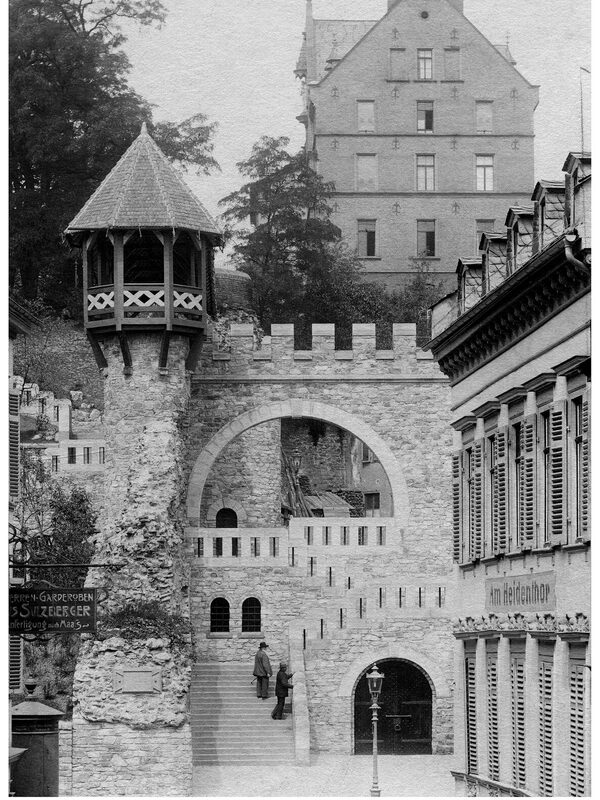Heidenmauer
The Heidenmauer in Wiesbaden's city center runs for 520 m between the street corner Schulberg/Hirschgraben from northwest to southeast to the market church on the Schlossplatz, with a bend at the level of the Langgasse, and is the only visible Roman monument in the city, of which two short pieces of about 50 m in length on both sides of the Roman Gate are preserved above ground.
The wall was seen by older researchers in connection with the expansion of the Mainz bridgehead under the Western Roman Emperor Valentinian I (Flavius Valentinianus 321-17.11.375, Emperor 364-375). As a military structure, it was interpreted on the one hand as a barrier wall, whereby it was assumed that it could not be bypassed due to the partly marshy terrain, and on the other hand it was assumed that a bypass was possible in any case, so that it was interpreted as part of a large fortification that could no longer be completed.
For around ten years, Wiesbaden architect Martin Lauth has been developing a theory that the Heidenmauer was part of an aqueduct through which fresh water from the Taunus was fed into the city. He commissioned a 14C analysis of wood samples recovered from the mortar at the Leibniz Laboratory for Age Determination and Isotope Research at Kiel University, which yielded a calibrated age of 214-344 AD in the 2-σ range, i.e. there is a 95.4% probability that the part of the wall from which the sample was taken is older than Valentinian. It is known that the Heidenmauer was built on indeterminably older masonry, but the first scientific dating of the Heidenmauer is a significant new result. Lauth's argument is based on completely logical possibilities and attempts to substantiate his basic assumption that the Heidenmauer = aqueduct with numerous examples. He traces the Nassau water supply of the 19th century theoretically in the literature and practically in the forests around Wiesbaden on the assumption that the Nassau princes had used existing Roman or late antique watercourses and thus destroyed the existing remains. According to this assumption, other facilities on the Schulberg, which were required for hydraulic engineering reasons, must have been destroyed by the construction of a bunker in the 20th century.
As things stand at present, it must be stated that none of the three theories has sufficient archaeological evidence. Margot Klee recently (2014) continued to see the Heidenmauer in a military context.
Literature
Baartz, Dietwulf; Hermann, Fritz-Rudolf (eds.): Die Römer in Hessen 2nd ed. Stuttgart 1989, s. v. Wiesbaden (Baatz) [pp. 485-494].
Czysz, Walter: Wiesbaden in der Römerzeit, Stuttgart 1994 [pp. 220-225].
Klee, Margot: Barrier wall or aqueduct. On the interpretation of the Heidenmauer in Wiesbaden. In: Nassauische Annalen 125/2014 [pp. 1-20].
Lauth, Martin: Wiesbaden - the city of water. A contribution to the Heidenmauer in Wiesbaden and the water supply in Roman times. In: Nassauische Annalen 122/2011 [pp. 1-53].
